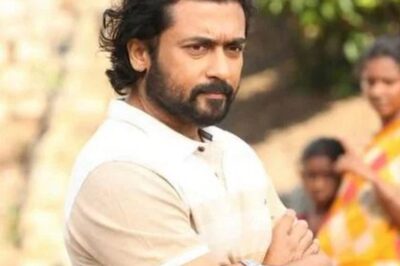
views
New York: Notwithstanding its repeated refutal of links with terror groups, the Pakistan military continues to support a broad range of militants as part of its three-decade strategy of using proxies against its neighbours and US forces in Afghanistan, a former top militant commander has claimed.
Terror groups like Lashkar-e-Taiba, Harkat-ul-Mujahedeen and Hizbul Mujahedeen are run by religious leaders, with the Pakistani military providing training, strategic planning and protection, the militant leader said.
A former top militant commander, said he was supported by the Pakistani military for 15 years as a fighter, leader and trainer of insurgents until he quit a few years ago.
The commander is well known in militant circles, but accustomed to a covert existence, ‘New York Times’ reported publishing an interview, the paper claimed he gave on the condition that his name, location and personal details would not be revealed.
Times said, that the former commander’s account belies years of assurance by Pakistan to American officials since September 11, 2001 attacks that it has ceased supporting militant groups on its territory.
The militant commander said that Pakistan’s military and intelligence establishments had not abandoned its policy of supporting militant groups as tools in Pakistan’s dispute with India over Kashmir and in Afghanistan to drive out American and NATO forces.
“There are two bodies running these affairs: mullahs and retired generals,” he said and named a number of former military officials involved in the programme, including former chiefs of the intelligence service and other former generals.
“These people have a very big role still,” he said.
Maj Gen Zaheer ul-Islam Abbasi, a former intelligence officer who was convicted of attempting a coup against the government of Benazir Bhutto in 1995 and who is now dead, was one of the most active supporters of the militant groups in the years after September 11, the former commander said.
He said he saw General Abbasi several times – once at a meeting of Taliban and Pakistani militant leaders in Khyber-Pakhtunkhwa Province as they planned how to confront the American military in Afghanistan; and twice in Mir Ali, which became the centre for foreign militants in Pakistan’s tribal areas, including members of Al Qaeda.
There were about 60 people at the Taliban meeting in late 2001, soon after the Taliban government fell, the former commander said.
Pakistani militant leaders were present, as were the Taliban ambassador to Pakistan, Abdul Salam Zaeef, and Muhammad Haqqani, a member of the Haqqani network.
Several retired officials of Pakistan’s premier spy agency, the Directorate for Inter-Services Intelligence, or ISI, were also there, he said, including a man known as Colonel Imam but who was actually Brig Sultan Amir, a well-known trainer and mentor of militants, and General Abbasi.
The militant groups divided Afghanistan into separate areas of operations and discussed how to ‘trip up America’, he said.
The Pakistani military still supports the Afghan Taliban in their fight to force out American and NATO forces from Afghanistan, he said, adding that he thought they would be successful.
The ISI also still supports other Pakistani militant groups, even some of those that have turned against the government, because the military still wants to keep them as tools for use against its arch-rival, India, he said.
The military used a strategy of divide and rule, encouraging splits in the militant groups to weaken and control them, he said.
Although the military has lost control of many of the firebrand fighters, and has little influence over the foreign fighters in the tribal areas who belong to Al Qaeda, some of whom openly oppose the Pakistani government, it was reluctant
to move against them, he said.
Pakistan could easily kill the notoriously vicious militant leader of the Pakistani Taliban, Hakimullah Mehsud, but chose not to, he said.
“If someone gave me 20,000 rupees, I would do it,” he said, citing a price of about $ 235. The government is not interested in eliminating them permanently,” he said.
“The Pakistani military establishment has become habituated to using proxies,” he said adding that there were many sympathisers in the military who still supported the use of militants.
Pakistan has 12,000 to 14,000 fully trained Kashmiri fighters, scattered throughout various camps in Pakistan, and is holding them in reserve to use if needed in a war against India, he said.
Yet, Pakistan has been losing the fight for Kashmir, and most Kashmiris now want independence and not to be part of Pakistan or India, he said.
Since September 11 2001, Pakistan has redirected much of its attention away from Kashmir to Afghanistan, and many Kashmiri fighters are not interested in that fight and have taken up India’s offer of an amnesty to go home.
“The Taliban lost a whole government for one person,” he said, again referring to bin Laden.
“And Pakistan went to war just for a few generals and now for President Zardari,” he said, referring to Asif Ali Zardari.
“Many of the thousands of trained Pakistani fighters turned against the military because it treated them so carelessly”, he said.
“Pakistan used them and then, like a paper tissue, threw them away,” he added.
Indeed, he was first trained for a year by the Pakistani militant group Lashkar-e-Taiba at a camp in Kunar Province, in Afghanistan, in the early 1990s.
The war against Soviet troops in Afghanistan was over, and Pakistan turned to training fighters for an insurgency in the Indian-controlled part of Kashmir.
He became skilled at firing Russian-made rocket-propelled grenades, and he was sent to fight, and train others, in Kashmir, Bosnia, Chechnya and Afghanistan.
Over the years he worked with different militant groups, and he estimated that he personally trained up to 4,000 fighters.
The entire enterprise was supported by the Pakistani military and executed by Pakistani militant groups, he said.

















Comments
0 comment